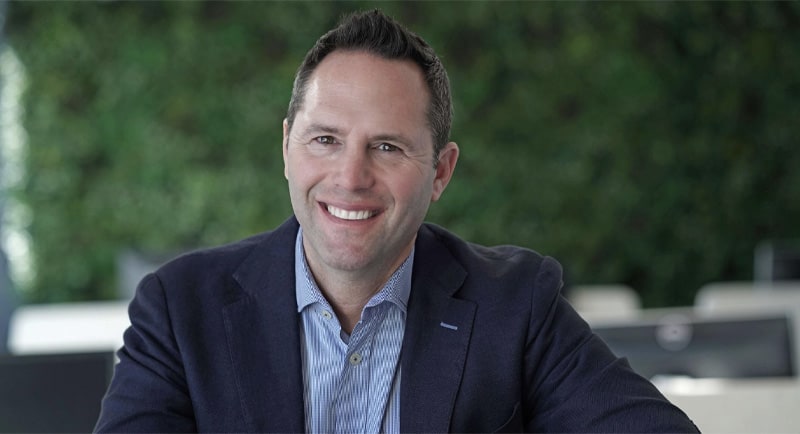Paul Sigaloff, chief revenue and growth officer at oOh!media, has taken a jab at linear TV, suggesting the digital evolutions causing problems for other mediums are not disturbing out-of-home.
“Now it’s important to point out that free-to-air television may be under structural, terminal decline, and you’ve got changes happening with cookie depreciation,” he said, speaking at IAB and OMA’s Powering Digital Out of Home event held late last week in Sydney.
“When you think about the way that people have been targeted with digital, that’s changing enormously. From an out-of-home perspective, we don’t have cookies, so we can be advantaged by that.”
Sigaloff also gave a wider view of the industry: GDP grew about 2.5% percent, largely underpinned by population growth. The ad market contracted by 2.7%, with what Sigaloff called “a pretty good three quarters but Q4 was a little bit turbulent”. In that same period, out-of-home grew by over 12%.
Digitisation
Sigaloff spoke about four mega-trends shaping the industry. The first he contextualised with the quote from John Wanamaker – “half the money I spend in advertising is wasted. The trouble is, I don’t know which half.”
“When I’m talking to marketers, they want to have a single audience view of their advertising spend. Now through omnichannel, they can start to see the elements that are working and dial up the channels that are, but in real time dial down those channels that aren’t,” Sigaloff said.
“This is leading to an opportunity for out-of-home, because through programmatic, we can play in omnichannel. And we’ve also got that great momentum, that sector growth.”
Sigaloff also touched on generative AI, which he said “is shaping media in totality”.
“If we think about the role that that’s going to play through technology, that’s absolutely a trend that we can leverage.”
Brand Fame
The second megatrend Sigaloff brought to the room was brand fame, introducing this trend by saying, “nobody gets famous in private.”
Pointing to both the recent Barbie campaigns and the work of Les Binet and Peter Field in their book The Long and the Short of It, Sigaloff told the room that the definition of a fame campaign is a campaign that inspires people to share their enthusiasm, both online and offline.
“The interesting thing about fame campaigns,” Sigaloff said, “is that they can be four times more effective at generating share of voice.
“When you look at the research, it says the best way to get the perfect outcome is to put about 60% of your activity in brand building, and 40% into your short-term campaigns. When we go back to brand fame, it’s really important to understand that metric, but the thing that really underpins that is critical reach. As we’ve seen through some of those structural shifts, out-of-home is really, really good at delivering mass awareness and reach.”
Data-Driven
The third trend was the industry’s continued efforts to be data-driven. Sigaloff gave the room three reasons why out-of-home in particular is the perfect medium to capitalise on this trend.
The first is Move 2.0, which Sigaloff argues is “the best global measurement system,” promising that will be launching “imminently”.
The second is around how businesses leverage data. “We’ve got that rich, first-party customer data, and what we’re doing is building a lot more sophistication in how we leverage the data partnerships we have.”
Most importantly, according to Sigaloff, is how you deliver greater ROI, which leads to point three, which is about measurement. “It’s full measurement right through the funnel, from brand awareness to sales attribution – understanding who our new customers are, how we upsell, cross-sell, and who lapsed customers are.”
Customer Centricity
Finally, he touched on customer centricity, joking “It’s very important to remember whilst we – that’s a big assumption, I mean me – may wake up in the morning and we think about out-of-home, and we go to bed at night and think about out-of-home, customers don’t always share that same perspective.”
In speaking to marketers, Sigaloff said there are generally two major challenges he’s found them to be facing, which can be tackled by customer centricity.
“Challenge one is that they’ve got a bit of an awareness problem. We’ve got a new product, how do we get mass reach? How do we get it to cut through?
“The other thing is there might be an existing product in a highly competitive marketplace, but they’ve got to sell more stuff.”
Using the case study of PepsiCo’s Bubly – off the back of the company’s announcement that they would no longer be advertising on free-to-air television – Sigaloff credited customer centricity for the drink’s increased sales and marketing penetration in three key ways, and the fact that it had more than doubled their customer base.
